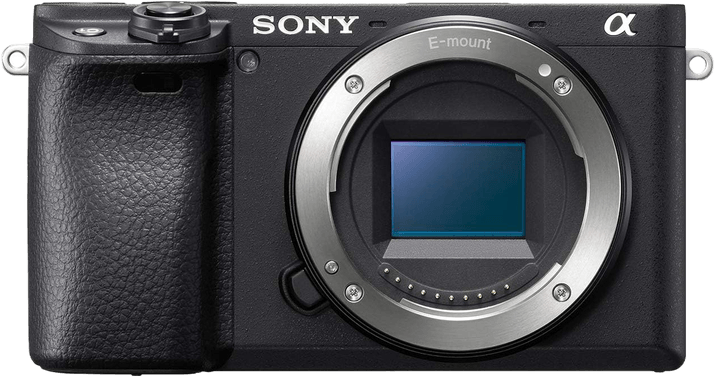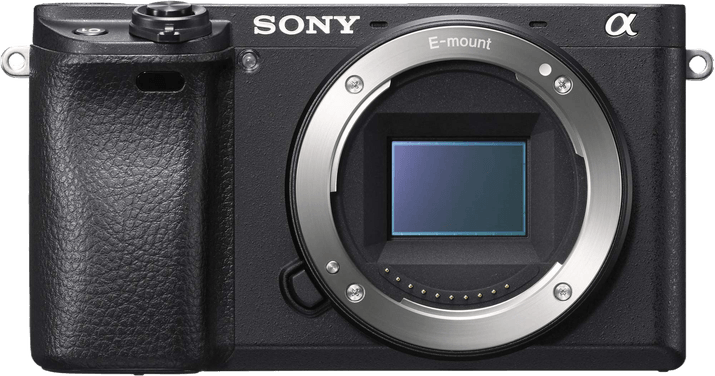Sony a6400 vs a6500 Comparison
Sony a6400

Sony a6500

The Sony a6500 takes the lead with a score of 72/100, while the Sony a6400 trails close behind with a score of 70/100. Both cameras are mirrorless and share similar dimensions, with the a6400 measuring 120 x 67 x 60mm and the a6500 at 120 x 67 x 53mm. The a6500 is slightly heavier at 453g compared to the a6400’s 403g.
The a6500 stands out with its higher score due to its performance and features, despite being released in 2016 at a launch price of $1400. On the other hand, the a6400, released in 2019, is more affordable with a launch price of $900.
Considering the score difference and specifications, the a6500 is a better option for those seeking higher performance and advanced features. However, the a6400 is an excellent choice for those on a budget who still want a quality mirrorless camera.
Sony a6400 vs a6500 Overview and Optics
The Sony a6500 wins in the optics comparison with a score of 74/100, while the Sony a6400 scores 68/100. Both cameras share several specifications, including 24.2 megapixels, 11 shooting speed, CMOS sensor type, Bionz X processor, APS-C sensor size, and Sony E lens mount.
The a6500 surpasses the a6400 in two key areas: DXOMARK score for the sensor and image stabilization. With a DXOMARK score of 85, the a6500 has a superior sensor performance compared to the a6400’s score of 83. This results in better image quality and low-light performance. Furthermore, the a6500 features built-in image stabilization, which the a6400 lacks. Image stabilization allows for sharper images and steadier video recording, especially when shooting handheld or in challenging conditions.
The a6400, on the other hand, does not have any significant advantages over the a6500 in terms of optics. Both cameras share the same specifications in most areas, and the a6500 outperforms the a6400 in the two areas that differ.
Taking these factors into account, the Sony a6500 is the superior choice for photographers and videographers seeking better image quality and stabilization. Its higher DXOMARK sensor score and built-in image stabilization make it a more versatile and reliable option for various shooting conditions. The a6400 may still be a suitable choice for those who prioritize other features or prefer a lower price point, but in terms of optics, the a6500 is the clear winner.
Sony a6400 vs a6500 Video Performance
The Sony a6400 emerges as the winner in video capabilities with a score of 91/100, while the Sony a6500 trails behind at 77/100. Both cameras share some common video specifications: they both have a maximum video resolution of 4K and maximum video dimensions of 3840 x 2160. Additionally, both cameras can achieve a maximum video frame rate of 120fps.
The Sony a6400 surpasses the a6500 in terms of video capabilities due to its built-in time-lapse functionality. This feature allows users to create stunning time-lapse videos without the need for additional equipment or software, making it more convenient and efficient for videographers.
On the other hand, the Sony a6500 does not offer any specific advantages in video capabilities compared to the a6400. Both cameras have the same video resolution, dimensions, and frame rate, but the a6400 has the added benefit of the built-in time-lapse feature.
Taking all factors into account, the Sony a6400 is the better choice for videographers seeking advanced video capabilities. Its built-in time-lapse functionality sets it apart from the a6500, providing users with a valuable tool for creating captivating videos. The Sony a6500, while still offering high-quality video performance, falls short due to its lack of time-lapse functionality.
Sony a6400 vs a6500 Features and Benefits
The Sony a6400 and Sony a6500 both have a feature score of 81 out of 100, making them evenly matched in this category. They share many specs, including a 3-inch screen size, 921,600-dot screen resolution, touchscreen capabilities, flip screen, GPS absence, Wi-Fi, and Bluetooth connectivity.
The Sony a6400 is better in some aspects. However, since both cameras have the same feature score, there is no clear winner in this comparison. The winning camera would be determined by the specific needs and preferences of the user, rather than a higher score.
On the other hand, the Sony a6500 may have some advantages over the a6400. Despite having the same feature score, some users may find that the a6500 has additional features or capabilities that are more suited to their needs. For example, the a6500 may have better image stabilization or faster autofocus. It is essential to consider individual requirements when choosing a camera.
In conclusion, both the Sony a6400 and a6500 are excellent cameras with many shared features. Neither camera is better due to its score, as they both have a feature score of 81 out of 100. The best choice for a user will depend on their specific needs and preferences. It is crucial to consider all aspects of the cameras and compare them to personal requirements before making a decision.
Sony a6400 vs a6500 Storage and Battery
The Sony a6400 outperforms the Sony a6500 in storage and battery, scoring 37/100 compared to the a6500’s 21/100. Both cameras have one memory card slot and accept SD/SDHC/SDXC cards, with the a6400 also supporting Memory Stick Duo (UHS-I compatible) and the a6500 Memory Stick Pro Duo.
The a6400’s battery life is superior, providing 410 shots per charge, while the a6500 only offers 350 shots. They both use the NP-FW50 battery type. Furthermore, the a6400 has USB charging capabilities, which the a6500 lacks.
Although the a6500 has a lower score, it still provides decent battery life and storage options. However, the a6400’s longer battery life and USB charging option make it more convenient for extended usage and on-the-go charging.
Considering these factors, the Sony a6400 proves to be a better choice in terms of storage and battery performance, while the a6500 remains a satisfactory option for users with less demanding storage and battery requirements.
Sony a6400 vs a6500 Alternatives
Still not ready to make a decision? Check out these popular camera comparisons for inspiration:
